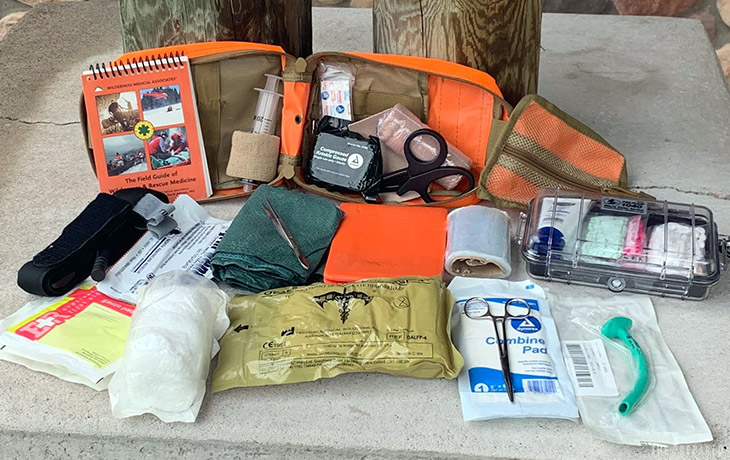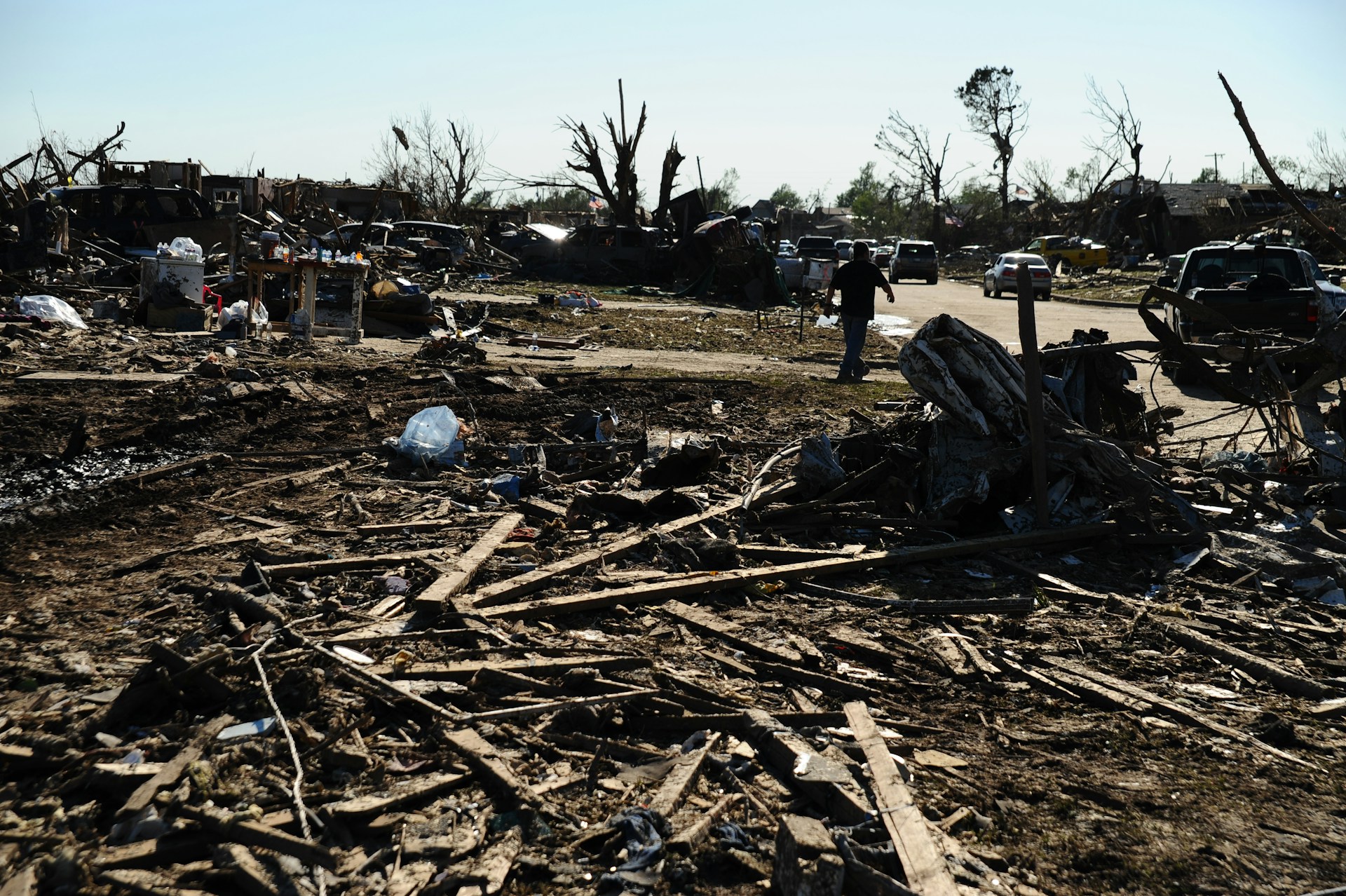Preparedness
Homeowner Defends Property: Intruder Shot in Face

A Pennsylvania homeowner found himself in a life-threatening situation over the weekend when a burglary suspect reportedly refused to leave his property.
According to Pennsylvania State Police, they responded to a call on Mae West Road in Henry Clay Township around 11:30 p.m. on Saturday regarding a burglary in progress.
The suspect, identified as 62-year-old David Luczak of Cleveland, wandered through multiple rooms before eventually stepping outside, as reported by Fayette County District Attorney Mike Aubele.
The homeowner, armed with a gun, confronted Luczak in the driveway. Despite being confronted, Luczak attempted to re-enter the home.
“Thank God the homeowner was armed; this could have been a lot worse,” Aubele said, emphasizing the gravity of the situation.
The homeowner fired multiple shots, striking Luczak twice in the face. Part of this intense encounter was captured on a doorbell camera.
Aubele confirmed on Monday that the homeowner acted within his rights and would not face any charges.
“I don’t see any reason why we’d be charging him. He acted well within his rights,” he stated.
Police provided immediate medical attention to Luczak until EMS arrived. He was then flown to a hospital, where he was listed in stable condition.
“He’s very lucky. He’s very lucky to have survived. Again, it’s by the grace of God he’s still here,” Aubele remarked.
Officials are investigating the possibility of a mental health issue involving Luczak. Conflicting information has been received from his family.
In 2013, Luczak was charged with murder in a homicide case, though it remains unclear if he was convicted.
Luczak did not take anything from the home during the incident, and it is still being determined if he had a weapon. He will face charges of burglary and criminal trespass.
“Everyone deserves to feel safe in their home and take appropriate action to protect their house, protecting their castle,” Aubele reiterated, highlighting the importance of self-defense in such scenarios.
This incident underscores the critical need for homeowners to be prepared to defend their property and loved ones.
Watch a local news report about the incident below:
Let us know what you think, please share your thoughts in the comments below.

Preparedness
Essential First Aid Gear Every Prepper Needs

In times of emergency, having the right first aid supplies can be a game-changer, potentially saving lives when professional medical help isn’t available. For preppers, who prioritize self-reliance and preparedness, a well-stocked first aid kit is essential. It ensures that you can manage injuries and illnesses without immediate access to hospitals or medical professionals.
A comprehensive first aid kit should cover basic wound care, essential medications, and tools for assessing and treating medical emergencies. This includes items like gauze pads, bandages, antiseptic ointments, and medical tape. Trauma shears are also crucial for cutting away clothing in emergency situations.
“Customize your kit based on your family’s needs, skill level, and likely risks.” This means considering the specific medical issues you might face based on your environment and personal health conditions. It’s also important to have over-the-counter medications for managing minor illnesses and symptoms when professional care is not an option.
Regularly rotating your stock ensures that medications remain effective and don’t expire. Proper storage is key to maintaining the viability of your supplies. Use waterproof containers and store them in cool, dark places to protect against environmental damage.
In addition to supplies, having the right knowledge and training is crucial. Taking courses offered by organizations like the Red Cross can provide hands-on experience in emergency medical skills, such as CPR and fracture management. “This emergency first aid training prepares you to potentially save lives when professional medical care is not available.”
Reference materials are also invaluable. Books like “Where There Is No Doctor” and “The Survival Medicine Handbook” offer practical advice and should be part of your medical library. These resources can guide you in diagnosing and treating health issues during emergencies.
Hands-on practice is essential for retaining skills. Regularly rehearse emergency techniques to build muscle memory and confidence. This preparation ensures that you can remain calm and effective when real emergencies occur.
Managing your first aid supplies effectively is another critical aspect of preparedness. Keep an up-to-date inventory, check expiration dates, and restock items as needed. Designate a secure storage area in your home, and use clear labeling for quick access during emergencies.
Proper organization of your supplies enhances your ability to respond effectively. Group related items together and clearly label kits based on their intended use. This smart organization allows for efficient response when health issues arise.
Preparedness goes beyond having supplies; it involves continuous education and skill enhancement. Engage with online resources, community groups, and training programs to expand your knowledge and capabilities. “Advancing first aid abilities via continuous education and upgraded gear improves readiness to handle more complex emergency health situations.”
By prioritizing first aid preparedness, you can mitigate reliance on professional healthcare during unstable times. This proactive approach ensures that you are equipped and knowledgeable to handle medical emergencies, potentially saving lives when traditional healthcare is inaccessible.
Let us know what you think, please share your thoughts in the comments below.
Preparedness
Maximize Your Garden Space with Vertical Planting Secrets

Vertical gardening offers a unique solution for those looking to maximize their gardening efforts without expanding their footprint. This method is particularly beneficial for urban homesteaders who often face space constraints.
By utilizing structures such as trellises, garden netting, or pot towers, gardeners can significantly increase their yield in a limited area. This approach not only maximizes space but also reduces the time spent on gardening tasks and enhances plant health.
Certain plants, including pole beans, sweet potatoes, tomatoes, and trailing varieties of cucumber, squash, and melon, thrive when grown vertically. If you’re short on space, it’s worth exploring vertical gardening as an option.
You’ll be surprised at how much can be cultivated vertically. Vertical container gardens on decks or patios allow for an impressive number of plants in a compact area.
One of the advantages of vertical gardening is the ability to utilize otherwise neglected spaces like walls and fences. Containerized, vertically grown plants can be placed almost anywhere, from driveways to balconies and even rooftops.
“Vertical gardening’s simplicity of maintenance is one of its biggest benefits.” By using vertical containers, you can avoid many of the common gardening issues such as weeds, pests, and soil-borne diseases, thus reducing maintenance time and effort.
Plants grown vertically benefit from improved airflow, which reduces the risk of rot. Trellising is particularly effective in promoting plant health by minimizing the spread of soil-borne fungus and disease.
Additionally, vertical gardening offers protection against root-feeding pests. While it won’t eliminate all pests, it does help reduce the presence of soil-dwelling critters.
This method also decreases the time spent on tasks like weeding, fertilizing, spraying, and watering, leading to healthier plants and crops.
For areas with limited sunlight, a garden tower with wheels can be rotated or moved to ensure plants receive adequate light throughout the day. Growing on a trellis can also help plants access more sunlight than they would on the ground.
Vertical gardening allows for a greater variety of plants, especially those that usually require significant ground space, such as pumpkins and cucumbers. Growing these plants upward is an efficient use of space.
Moreover, veggies grown on vertical structures are easier to spot and harvest, which is kinder on your back.
Vertical structures can also serve as a means to create privacy, hide unattractive areas, and establish garden rooms or secret spaces within your yard.
Let us know what you think, please share your thoughts in the comments below.
Preparedness
Master Scavenging: Essential Skills for Post-Disaster Survival

In the world of survivalism, preparation is key, but even the most seasoned prepper might face situations where scavenging becomes necessary. While you may have stocked up on essentials, unforeseen events could require you to seek additional resources. Many emergency preparedness advisors recommend having enough provisions for 72 hours, yet history has shown that people can be without power or resources for much longer.
In the event of a societal collapse, whether due to a nuclear event, EMP, or a catastrophic natural disaster, scavenging might become a vital skill. It’s essential to distinguish between scavenging and looting. Scavenging involves gathering usable items from discarded or abandoned places, while looting is the act of stealing goods that clearly belong to someone else, often during chaotic situations.
“Looting is something common criminals do without any good reason. Scavenging is what survivors do to ensure they live another day.” Looting often involves taking non-essential items, whereas scavenging focuses on necessities like food and water.
When considering scavenging, focus on survival needs. Evaluate whether you have enough food, a reliable water source, adequate clothing and shelter, communication means, and medical supplies. It’s crucial to think long-term, as the world might not return to normal quickly. For instance, instead of just seeking food, look for resources that can sustain you in the future, like seeds or fishing gear.
Consider your medical needs as well. Even if you have a supply of prescriptions, ask yourself, “What will you do when that one bottle runs out?” Scavenging might become necessary to find the medications you need.
When planning to scavenge, ask yourself these questions: What do you need? What supplies are required long-term? Why do you need these items? Where can you find them? How will you transport and store them?
In extreme situations, such as nuclear disasters, expect the world to be turned upside down. Traditional supply sources like grocery stores or pharmacies may be empty due to early looters, so think creatively about where to find supplies. Follow the path of products from their origin to waste. Farms, food manufacturing plants, and storage units might be more fruitful than depleted stores.
To be successful at scavenging, you need a solid plan. Start by making a list of essential items, prioritizing them based on necessity. Choose areas that are less populated and possibly overlooked by others. Scout the area beforehand to ensure safety and identify potential escape routes.
When collecting goods, ensure you have the means to carry them, such as a tote, bag, or even an abandoned grocery cart. Equip yourself with tools like a box cutter and lock pick to access supplies. Once you’ve gathered items, have a discreet storage plan to keep them safe from others who might be searching for the same resources.
In desperate times, bartering might be necessary. “Barter carefully” to ensure you obtain essential resources without compromising your safety or supplies.
Having a plan is crucial for successful scavenging. In addition to knowing what and where to scavenge, plan how you’ll transport goods back to your base. Tools like a lock pick kit, crowbar, or window breaker can help access buildings, while a flashlight and communication tool are wise additions to your scavenging kit.
Ultimately, while scavenging should only be a last resort, being prepared with a strategic approach can make the difference between mere survival and thriving in a post-disaster world.
Let us know what you think, please share your thoughts in the comments below.
-

 Tactical1 year ago
Tactical1 year ago70-Year-Old Fends Off Intruder with Lead-Powered Message
-

 Tactical1 year ago
Tactical1 year agoVape Shop Employee Confronts Armed Crooks, Sends Them Running
-

 Preparedness9 months ago
Preparedness9 months agoEx-Ballerina’s Guilty Verdict Sends Tremors Through Gun-Owner Community
-

 Preparedness7 months ago
Preparedness7 months agoGood Samaritan Saves Trooper in Harrowing Interstate Confrontation
-

 Tactical1 year ago
Tactical1 year agoMidnight SUV Theft Interrupted by Armed Homeowner’s Retaliation
-

 Survival Stories2 years ago
Survival Stories2 years agoEmily’s 30-Day Experience of Being Stranded on a Desert Island
-

 Preparedness8 months ago
Preparedness8 months agoArizona Engineer’s Headless Body Found in Desert: Friend Charged
-

 Preparedness7 months ago
Preparedness7 months agoBoy Saves Dad from Bear Attack with One Perfect Shot
Gerald Fontenot
August 29, 2024 at 11:39 am
The 2nd amendment is there for a reason, put there by smart people, not ‘woke’ or liberal people.
Joan
August 29, 2024 at 12:56 pm
How can it remain unclear if he was convicted in 2013. Is the paperwork in Pennsylvania that bad. It sounds like he was released but they don’t want to let the media know.
V
August 29, 2024 at 3:15 pm
This has NOTHING to do with liberals you partisan fuqcnughet
Timothy
August 30, 2024 at 11:39 pm
what caliber was the gun that was used? Must have been small. Two shots to the face? still alive?